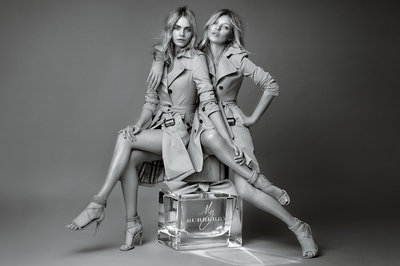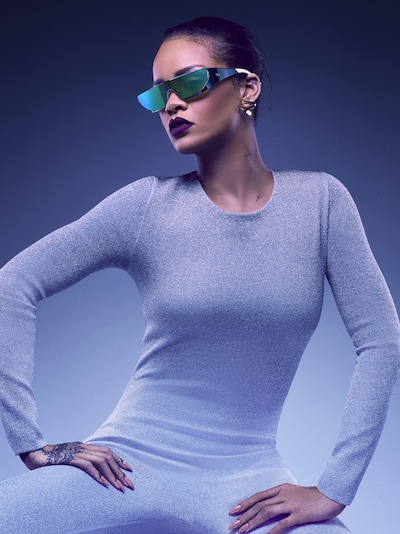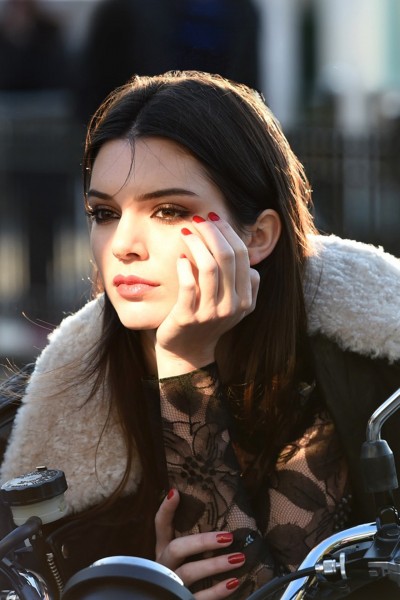Although the definition of what constitutes a celebrity has evolved with the advancement of social media, a new report by Celebrity Intelligence finds that 40 percent of agency respondents feel that celebrity-driven marketing strategies remain very effective.
Celebrity Intelligence’s “The Future of Celebrity Marketing” 2016 report, in partnership with eConsultancy, explores the value of celebrity ambassadors and how this role has changed as vloggers and bloggers have become more prominent. The report also delves into the importance of social media strategies when working with a celebrity ambassador, with 79 percent of brands working with well-known talents in this capacity.
“Luxury marketers are no stranger to the world of celebrity marketing,” said Priyanka Dayal, content marketing manager of Centaur Media, parent of Celebrity Intelligence. “Celebrities are and have always been the face and name of luxury brands – embracing the pages of glossy magazines, prime TV ad spots and the red carpet.
“But now, thanks to social media and the rise and rise of social media stars, luxury marketers have more choice –in the platforms they choose, what they expect out of the contract, right down to the talent they choose,” she said. “Social media promotion is becoming top priority for brands, which is giving rise to one-off campaign-specific contracts.
“This is true for the luxury sector as well – we’ve seen Burberry continue to work with the biggest celebrities, but the iconic fashion brand is also using niche influencers, on new media platforms, to communicate to a perhaps more niche audience.”
Celebrity Intelligence’s inaugural Future of Celebrity Marketing research report was based on online survey responses from 355 marketing specialists, representing in-house brand marketers, agencies, consultants and media owners.
Now hiring: Celebrity ambassadors
Nearly every brand in luxury, from auto to hospitality, has worked with a celebrity ambassador in some capacity. The overall purpose of the strategy is to leverage a celebrity’s fan base through interactions with a brand. If consumers see that their favorite celebrity sports a Tag Heuer wrist watch or wears Estée Lauder cosmetics, for example, there is a higher chance that they too will want to own a piece of the brand.
As social media has evolved, celebrity campaigns have become more dynamic, giving marketers new opportunities to expand outreach, whereas in the past their efforts were limited to traditional print campaigns, television spots, red carpet dressing and the occasional in-store appearance.
Today, a social media element has become a top request in celebrity campaign contracts. Responding to Celebrity Intelligence’s survey, 79 percent of brands and 75 percent of agencies work with celebrity talents in this context.
According to those surveyed, 100 percent of agencies feel the strategy is “highly effective” or “quite effective” overall.
In 2014, British fashion label Burberry did just that when it recruited models Kate Moss and Cara Delevingne to be the campaign faces of the then-new My Burberry fragrance. When the announcement was made it marked the first time the British It models had worked together, which furthered the attention the campaign received.
Heightening the celebrity-fronted campaign further, Burberry used Instagram to unveil the advertising campaign prior to releasing details of the scent itself. At the time other brands had used the social platform to share exclusive content but none had relied on Instagram to break news stories (see story).
Although in this instance a print campaign followed, 40 percent of agencies and 22 percent of brands said that most celebrity efforts on social media are on an individual basis rather than a traditional contract.
For its survey, Celebrity Intelligence found that 74 percent of agencies and 69 percent of brands’ in-house marketers are currently working with celebrities.
Even as bloggers and social influencers such as Song of Style’s Aimee Song or Blonde Salad’s Chiara Ferragni gain prominence with luxury contracts, traditional celebrities are still the most desirable ambassadors.
In the last year, for example, 40 percent of brands worked with singers/musicians on a campaign and 35 percent signed a film actor as an ambassador. Television actors and models were signed at a rate of 33 percent and 32 percent respectively.
For example, French atelier Christian Dior has evolved its relationship with singer Rihanna from campaign ambassador to creative collaborator.
In 2015, Rihanna fronted Dior’s Secret Garden IV campaign, helping to modernize its brand image and tap into the singer’s high-profile celebrity. In May 2016, it was announced that Rihanna had worked with Dior to design a pair of sunglasses (see story).
While traditional celebrities are still more preferred, 43 percent of brands and 46 percent of agencies stated that social media starlets could be relevant for future projects. Last year, 28 percent of brands and 37 percent of agencies worked with social media celebrities on a campaign.
An important aspect of leveraging a social media celebrity is tapping into their established audience of dedicated followers.
Beauty marketer Estée Lauder learned this in 2014 when reality television star-turned-model Kendall Jenner was selected as its spokesmodel in a bid to win over millennial consumers.
At the time, Ms. Jenner’s modeling career was just taking off and brands began taking her more seriously, separating her from her famous kin. Due to Ms. Jenner’s massive online following, Estée Lauder jointly announced her appointment on its social channels as well as the models’.
When one of her first Estée Lauder campaigns debuted, the results were staggering. Ms. Jenner’s Instagram post announcing the video for Little Black Primer mascara garnered more than 420,000 likes. In the first two hours of its posting, the video generated more than 230,000 likes on her channel (see story).
“Thanks to digital media, marketers have more choice today and are able to better target their campaigns based on what they want to achieve,” Ms. Dayal said. “Whether it is reach they’re after, context, or a bit of both – the advent of social media stars to the celebrity space have made campaigns more creative, less predictable and just that bit more real.
“While opinion is divided over whether social stars can truly be categorized as celebrities, the lines are blurring, and traditional media will increasingly come to recognize some of the biggest faces in social media, in the way that it’s come to know the likes of Chiara Ferragni, Tanya Burr and Zoellas of the world,” she said.
ROI and risk
When gauging the success of a celebrity campaign, brands measure ROI in terms of press coverage, Web traffic, content sharing, online mentions and revenue generated.
But, survey respondents did acknowledge that working with a celebrity has its challenges. Seventy percent of brand respondents said the management and initial outreach can be a time consuming task.
Indeed, nearly half of agencies surveyed plan to increase budgets for such projects within the next 12 months. Likewise, 49 percent of agencies and 39 percent of brands plan to “increase [budgets]significantly” or “increase [budgets]moderately” to secure celebrity ambassadors.
Working with celebrities can be very successful, but it is not without risk.
Christian Dior, Tag Heuer and Lancôme have all recently found themselves involved with celebrities that have been in the news for reasons other than the products they endorse.
When working with a celebrity there are inherent risks, as the ambassador is invited into the brand’s inner workings and serves as a real-life representation of the company’s positioning. Despite being the face of a brand, celebrity ambassadors also have personal lives, careers and opinions that may occasionally outshine or undermine the message the brand is hoping to portray via its selected spokesmodels (see story).
“The real-time nature of information today has made managing a brand’s reputation online much harder – especially if the brand is linked to the reputation of other high-profile personalities,” Ms. Dayal said.
“One of the experts quoted in our report, Nick Ede, CEO of charity-specific campaigns agency, East of Eden, puts it brilliantly when he says, ‘Today they’re amazing, tomorrow they could be in jail,’” she said.
“Owing to the shift in celebrity culture and the infiltration of social talent, it is not surprising that brands are increasingly working with celebrities on a campaign-specific basis. This is true of 40 percent of the agencies questioned and 22 percent of company respondents.”
This article first appeared in www.luxurydaily.com





